Rugby collision or a card? the pictures that show referees don’t have a clue
Someone needs to sort out what constitutes a high tackle and what is a rugby collision before the start of the Springboks three-match Test series against the British & Irish Lions. Right now, no referee or TMO seems to know the difference and my hope is that the Springboks and Lions series is decided by the inspiration of players and not the high tackle interpretation of match officials, writes Mark Keohane.
This inconsistency and indecision is having a massive impact on the flow of matches and the subsequent results, and please don’t let it be the defining memory of the most anticipated Test matches since the Rugby World Cup final in 2019 and since the All Blacks played the Lions in New Zealand in 2017.
That series in 2017 was decided in the last minute by the most controversial referee decision that still can’t be explained.
Every single match I watched in the past season, be it from Europe, Australia, Japan, New Zealand or in South Africa, has one certainty and that is the inconsistency in what constitutes a ‘rugby collision’ or a ‘high tackle’ that is now a sending off offence.
The interpretation and application has become ridiculous. Referees have now become medical doctors and mathematicians in terms of angle of impact, angle of completion of the tackle, the seriousness of the impact, force in the impact, intent in the impact and whether or not the impact will have any lasting effect.
The TMO often is guided by the referee question, but even more alarming is the referee, who has witnessed the incident, from five metres away and in real time, doesn’t back what he has seen and often relies on the TMO to give a verdict, based on repeated super slow motion visuals, from various angles.
Hell, if super slow motion is to be the determining factor, then the moment a player scores is slowed down to a frame-by-frame analysis, it looks like he or she has no control of the ball. Play it in real time, which is even slower than the pace at which it happens on the field, and you will get a very different interpretation.
Now let’s go to these rugby collisions that are being called yellow and red card offences and at worst a penalty.
Some referees opt out with the ‘extenuating circumstance’ of a player already bending the knee and ducking down and others are unrelenting that it doesn’t matter if there is any circumstance that causes the collision to be high.
Referees also are inconsistent in the application if it is a collision among the backs or in backline play and when it is close to the ruck or from a maul. I’ve seen countless neck rolls in the tackles and neck tackles every time a forward picks up and drives the ball up. Sure, the body positioning is low, but the fact remains the tackle is made above the shoulder and on the neck area.
Then I have seen the most innocuous midfield collision, where the defender hits the attacker with a leading shoulder (and arms wrapped around) on the upper chest and if replayed in the slowest of replay motions, the finish point of contact makes it look as if the defender has decapitated the attacker.
Rugby is a collision sport and common sense has to be applied.
Once again everything has come down to referee and TMO interpretation and by that human error.
When is it an illegal tackle and when is it simple rugby collison? And then we have the politically correct, out of kilter with the sport, that everything is centred around player safety.
Come on, it is a bit like limiting the speed of what an F1 driver can go or else it may lead to an accident and endanger his safety. Those individuals choose to drive fast for a living and it is the same with rugby players. They chose the profession, knowing the risks of injury.
Rugby is a collision sport. To quote former Springboks coach Heyneke Meyer, ballet is a contact sport and rugby is all about collisions. To quote former All Blacks captain Tana Umaga: ‘This isn’t tiddlywinks.’
If rugby is to be determined on the interpretation of a collision, then stop tackling and turn rugby into an exhibition of skilled touch rugby.
Zelim Nel’s forward pass video that has everybody up in arms
Analyst and SA Rugby Mag author Zelim Nel, the architect of the controversial video that asks when is a pass forward, also examined the madness of rugby interpretation of red cards. His conclusion: ‘Ref, send everyone off or keep cards in your pocket’.
I couldn’t agree more.
Check out some of the pictures below from the Heineken Cup final between Toulouse and La Rochelle that show just how inconsistent the interpretations of the match officials were.
Why wasn’t La Rochelle’s Raymond Rhule sent off for this shoulder-to-head hit on Toulouse lock Rory Arnold on Saturday? He wasn’t even penalised.
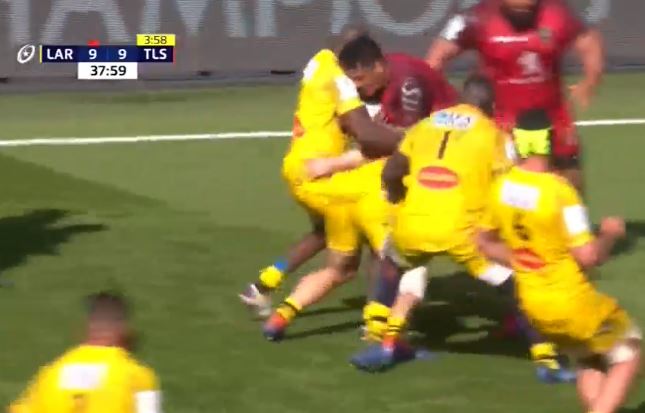
What about this shoulder hit to the head of Thomas Ramos? This was not penalised.
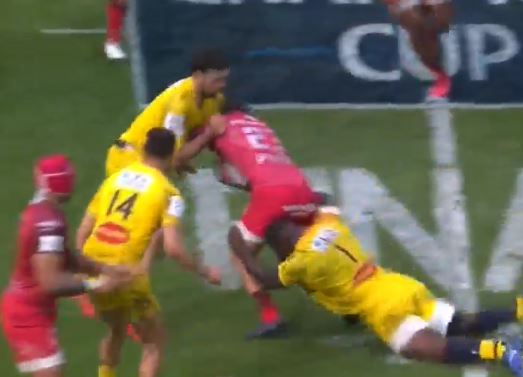
Or this leading elbow to the head of tighthead prop Uini Atonio? It was not penalised.
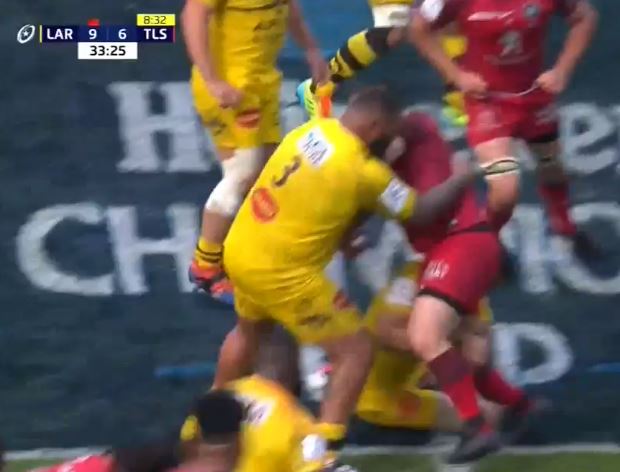
The Champions Cup final was decided after 27 minutes when La Rochelle lost centre Levani Botia to a red card for this high tackle.
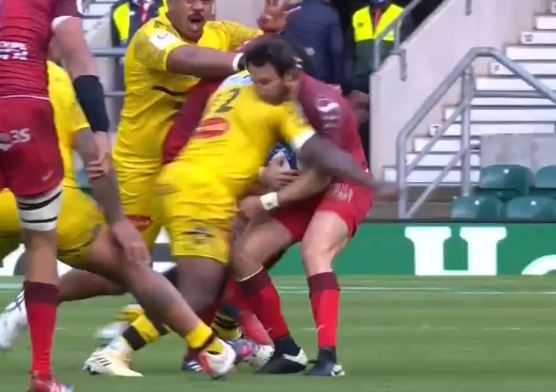
As you can see from the following images, Toulouse fullback Maxime Medard drops a full foot in height in the 10ths of a second preceding the collision.
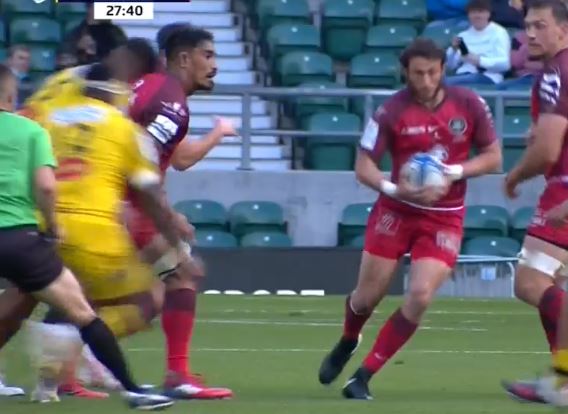
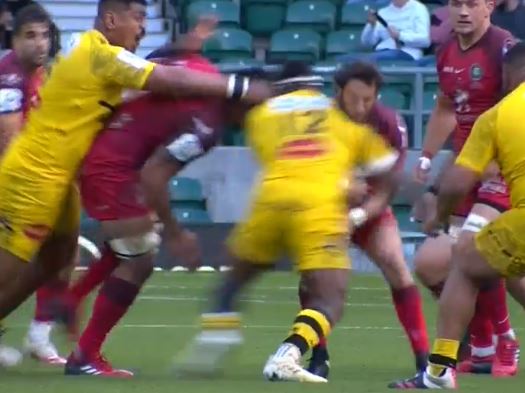
But ‘rules are rules’ and this was a tackle that started above the imaginary line between the shoulders and went up after contact – it deserved a penalty, at least, if the law is being refereed.
Early in the second half, La Rochelle’s Greg Alldritt took this shot from Toulouse centre Pita Ahki. There was no sending off.
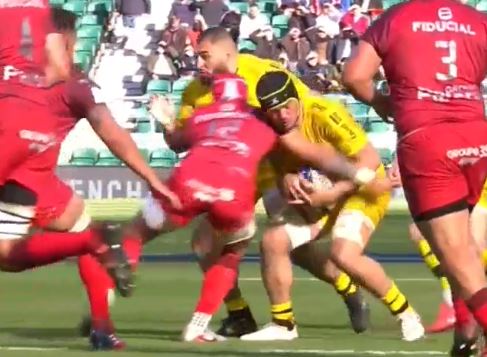
There are 10 screen shots you could take from every match, with three of them a penalty, one a yellow card, one a red card and five not even noticed by the referee or TMO, but technically all speak to a rugby collision and the only difference in consequence is the interpretation of the match officials.
High shots should be penalties unless there is repeated infringement or there is indisputable evidence that it was a reckless foul.
My hope is that the Springboks and Lions series is decided by the inspiration of players and not the interpretation of match officials.
